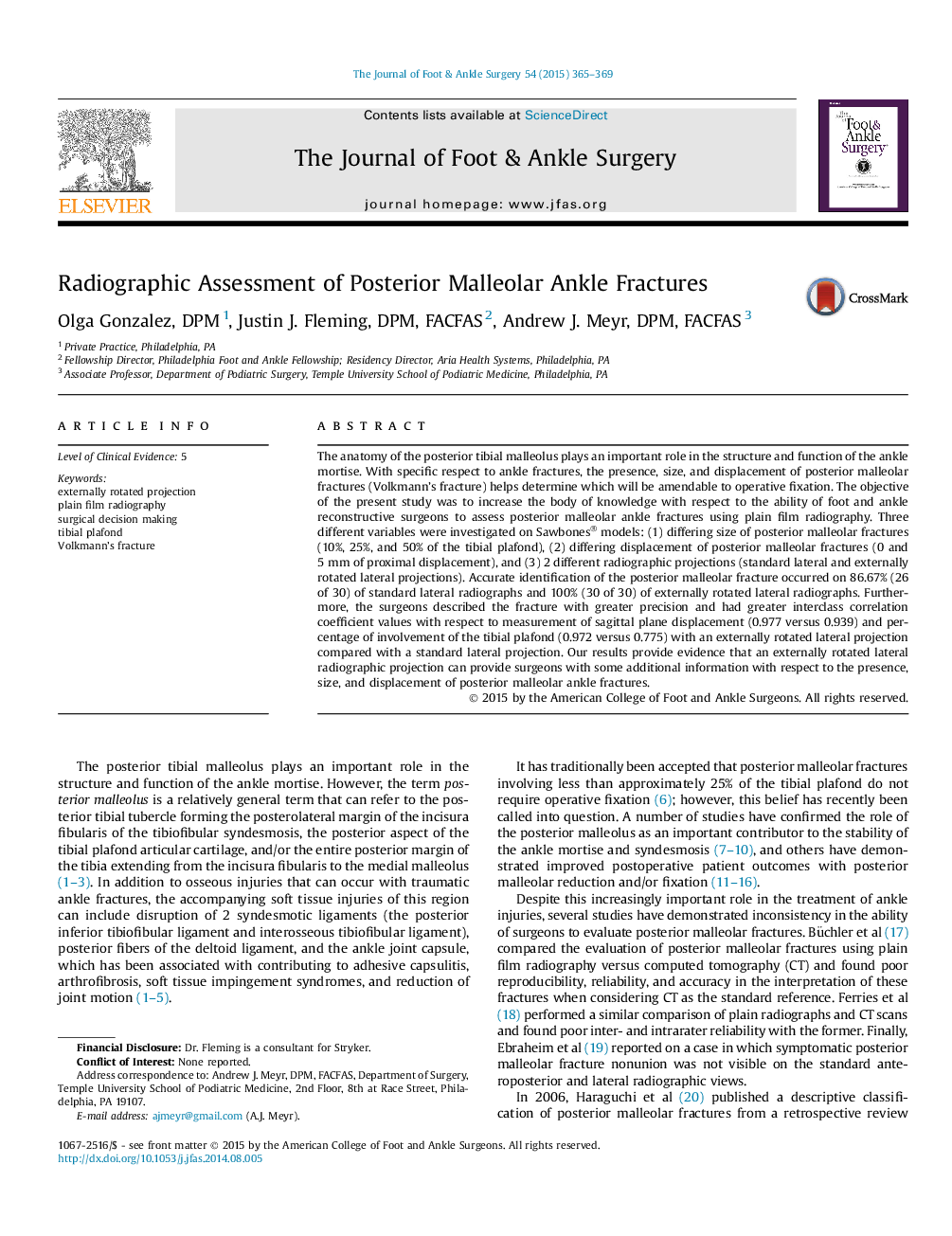| Article ID | Journal | Published Year | Pages | File Type |
|---|---|---|---|---|
| 2719377 | The Journal of Foot and Ankle Surgery | 2015 | 5 Pages |
The anatomy of the posterior tibial malleolus plays an important role in the structure and function of the ankle mortise. With specific respect to ankle fractures, the presence, size, and displacement of posterior malleolar fractures (Volkmann's fracture) helps determine which will be amendable to operative fixation. The objective of the present study was to increase the body of knowledge with respect to the ability of foot and ankle reconstructive surgeons to assess posterior malleolar ankle fractures using plain film radiography. Three different variables were investigated on Sawbones® models: (1) differing size of posterior malleolar fractures (10%, 25%, and 50% of the tibial plafond), (2) differing displacement of posterior malleolar fractures (0 and 5 mm of proximal displacement), and (3) 2 different radiographic projections (standard lateral and externally rotated lateral projections). Accurate identification of the posterior malleolar fracture occurred on 86.67% (26 of 30) of standard lateral radiographs and 100% (30 of 30) of externally rotated lateral radiographs. Furthermore, the surgeons described the fracture with greater precision and had greater interclass correlation coefficient values with respect to measurement of sagittal plane displacement (0.977 versus 0.939) and percentage of involvement of the tibial plafond (0.972 versus 0.775) with an externally rotated lateral projection compared with a standard lateral projection. Our results provide evidence that an externally rotated lateral radiographic projection can provide surgeons with some additional information with respect to the presence, size, and displacement of posterior malleolar ankle fractures.
